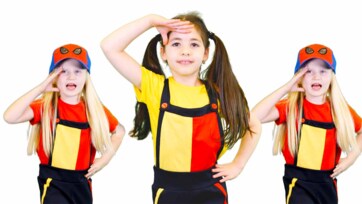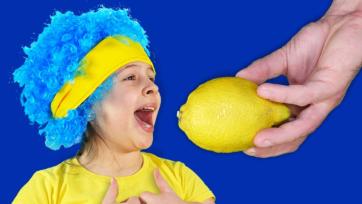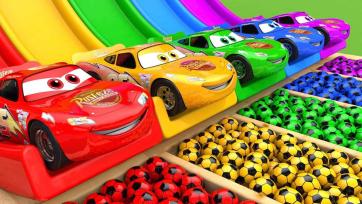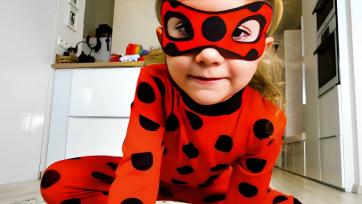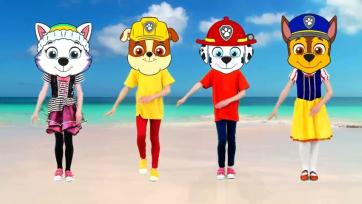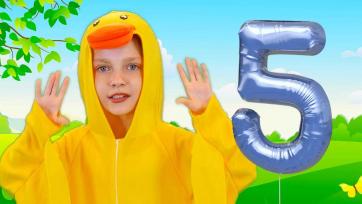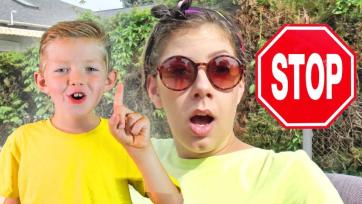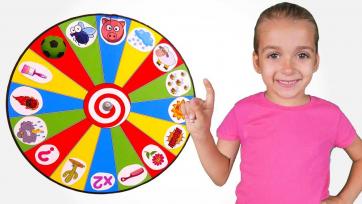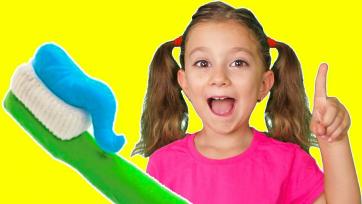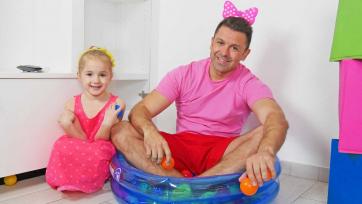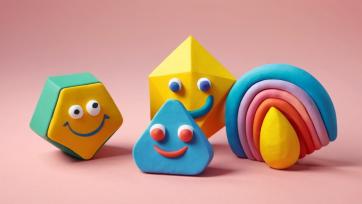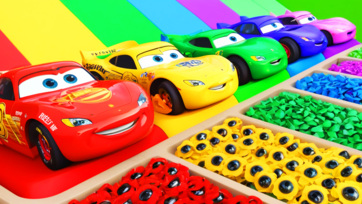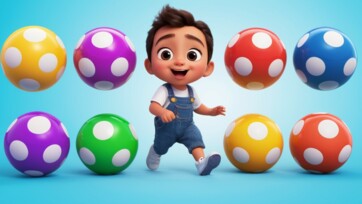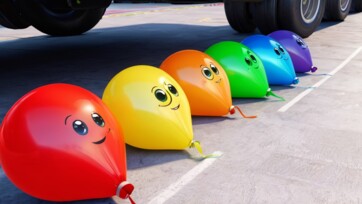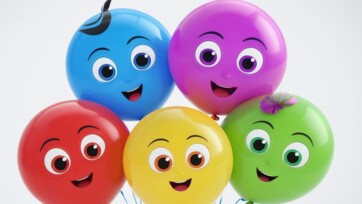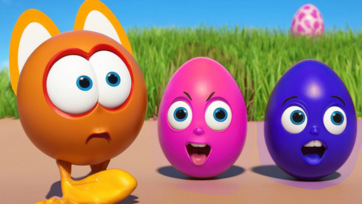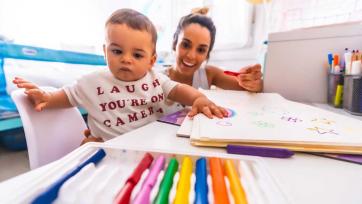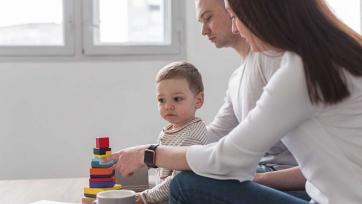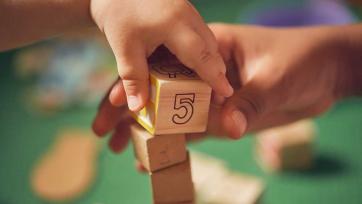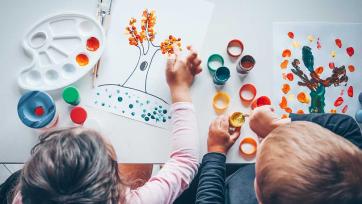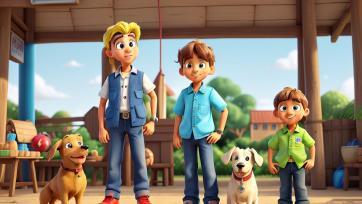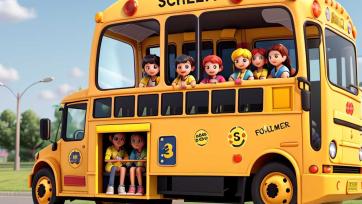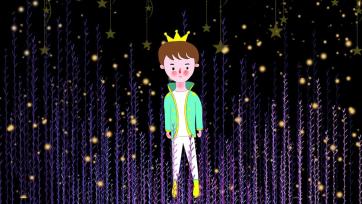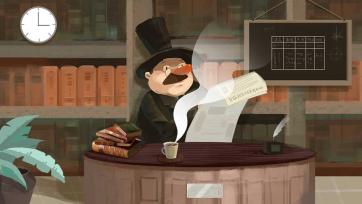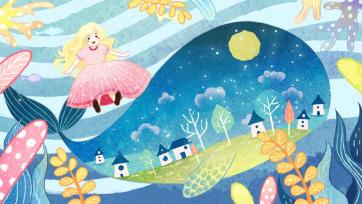A Cursed House
Once upon a time, in a small house in the forest, there was a couple living with their two daughters, Nami and Angela. The older sister Nami was very lazy and spent all day hanging out. Angela was very hard-working and cared about everyone.
One day, the father went to the forest to cut firewood. He told his wife and children," I'll go cut firewood now. Please prepare a delicious meal and bring it to the forest for me."
Mother said, “I’ll ask Nami to bring lunch to you."
Father said, “The path there is confusing. I will spread the peas along the way so she can find me."
At noon, Nami brought rice to the forest for her father. Along the way she saw a lot of peas that her father had left. She thought she could found her father easily with peas that were spread on the way.
So she decided to walk slowly and enjoy the forest. Nami wandered around and had a lot of fun. She was distracted by the beauty of the forest, so she forgot her job. She didn't even realize that the birds ate all of the peas.
It was dark and she couldn't found the peas that her father had left. Nami tried to find her way in the dark. She followed a glimmer of light and found a small house in the middle of the forest. She approached and knocked on the door, and then she heard a voice, "Come in!”
Nami walked in the house and saw an old man sitting next to the fire. There were also three animals, a dog, a rooster and a hen.
The old man asked, “Who are you? Why are you wandering through the forest?”
Nami said, “Sir, I was lost on the way to bring lunch to my father. Could you please allow me to stay for a night?”
The old man asked his pets whether he should allow Nami to stay a night in this house or not. The pets shook their heads in favor of Nami.
The old man said to Nami, “We will let you sleep here for one night. There is a lot of food in the kitchen, please go and cook dinner for all of us!"
Nami was very happy. She went to the kitchen and saw a lot of food there. But she was lazy; Nami only cooked a small pot of soup. Nami brought the soup to the living room to eat with old man .But she forgot to cook for the animals, leaving them hungry. They were all very sad about the girl's carelessness.
After having the soup. She said to old man, “Sir, I'm tired now, I just want to go to sleep. Please show me where the bedroom is."
Old man said, “There are two bedrooms here. Please go clean them up and make the bed for me as well, I'll come late.” Nami obeyed the old man, she went upstairs. There were two rooms. She went into one of that room and cleaned a bed for herself. She was lazy; she didn't clean the bed for the old man. She just lay down and slept without making the bed for the old man.
By the time the old man went into his room, he found the bed still dusty and messy. He sighs and said to himself, “well, this is not the girl that I'm looking for! She is very lazy and disrespectful."
The old man snapped his fingers. Suddenly the bed, where Nami was sleeping, split into two pieces. She fell down and disappeared, and then the bed returned to normal.
Later the day, when the woodcutter returned home, he complained to his wife, “I have been starving all day today."
Wife said, “I told Nami to bring food to you. She must have wandered around and went to his aunt house. This careless girl!”
Father said, “Tomorrow, I will go the forest again. Tell Angela to bring food to me."
The next day, Angela went to the forest to bring food to her father. Unlike her sister Nami, she followed her father's path very carefully. She reached her father in half an hour. The father was very happy to see her daughter, Angela.
Angela said, “Hello! Father, mother had cooked a very delicious meal for you. Now, I must leave, It's already getting dark."
Father said, “Yes, You should leave and thank you for this meal."
After saying goodbye to her father she started walking back to her house. But, the birds had eaten all the peas in the way. It was very difficult for her to find her way back home. She was lost and it was dark everywhere around.
Angela followed a glimmer of light. She found a small house in the middle of the forest. She approached and knocked on the door.
She said, “Is there anyone here?”
She listened a voice, “Come in!”
Angela went inside, and she saw the old man sitting in front of the fire with three pets.
The Old man said, “Who are you? Why are you lost here?"
She said," Sir, my name is Angela. I was coming back home after giving lunch to my father, and I got lost. Could you please allow me to sleep here for one night?”
As usual, the old man asked the three animals beside him.
He said, " Hey hen, rooster and dog, what do you think?”
They said," Master, we are fine with that!”
The old man said, “We will let you sleep here for one night. There is a lot of food in the kitchen, please go and cook dinner for all of us!”
Angela obeyed him and went to the kitchen. She saw lots of good ingredients there. She decided to cook some delicious dishes to thank old man and for the pets for letting her stay. Then, Angela cooked a lot of delicious dishes. The old man and the animals were very hungry just by the smell. Angela invited the old man to enjoy the meal first and then went to feed the three animals. They happily thanked her. After that, she sat down to eat with the old man.
Once every one had finished eating, Angela suggested, "We have finished the meal. Shall we get some rest now?”
The old man said to his pets, "Hey hen, rooster and dog, what do you think?"
They said, “She treats us very well. Thank you very much! Have a goodnight!”
The old man said to Angela, “There are two bedrooms in the house. Please go clean up and make the bed for me as well. I'll be right up".
Angela obeyed the old man. She carefully cleaned up and made the bed in both bedrooms. After the old man went to bed, she went back her room to sleep. That night she slept very well.
The next morning, she woke up early. Angela was very surprised to find herself in a luxurious and beautiful room. Suddenly, three servants entered the room. They politely asked her, “You are awake madam. Do you need anything?”
She was still surprised, she said, “No, I have to get up to make breakfast for the old man and three friendly animals.
The servants said, “You don't have to do anything anymore, mam. Our master is waiting for you, Ma'am".
Following the servants instructions, Angela went into a room. She was surprised to see a young handsome man waiting for her.
That man said to Angela, “I am Prince Garry, the owner of this castle. I was cursed by a witch so I became very old. The castle also turned into a small house and my three loyal servants turned into pets. The witch had said only a caring and responsible girl can lift this curse. So, I thank you for helping me."
Angela was very happy after listening this. The prince then said, “When the castle was cursed, there came a girl named Nami, who was lost in the forest. She was lazy and irresponsible."
Angela at once said, “She is my sister. Where is she, now?”
Prince said, “Don’t worry. Your sister is fast asleep in the room. My servant will go wake her up."
Then prince asked Angela that If she would marry him. Angela accepted the proposal of the prince. They welcomed Angela's parents in the castle and held a grand wedding in the castle.
MORAL LESSON
We should be responsible.We should take care of the people around us.We should be kind and respectful.



